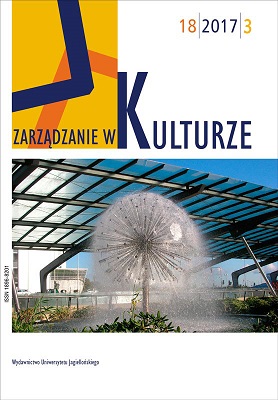Sfera Autonomii, Sfera Biurokracji. Relacje Polskich Teatrów Publicznych I Ich Organizatorów W Perspektywie Międzynarodowej
The Sphere of Autonomy, the Sphere of Bureaucracy. The Relations of Polish Public Theaters and Their Organizers in an International Perspective
Author(s): Kamila LewandowskaSubject(s): Theatre, Dance, Performing Arts, Public Administration, Management and complex organizations, Sociology of Culture, Sociology of Politics, Sociology of Art
Published by: Wydawnictwo Uniwersytetu Jagiellońskiego
Keywords: cultural policy; arm’s length princile; culture institution; art council;
Summary/Abstract: According to many researchers, the cultural policy model based on the arm’s length principle gives public institutions more autonomy than the so-called bureaucratic model. In line with the typology by Hillman-Chartrand and McCaughey (1989), the former is called the “patron model” and implemented in the Anglo-Saxon countries. The latter, dubbed the “architect model,” prevails in continental Europe, including Poland. The aim of this paper is to question the popular belief that the continental model, by definition, has a greater bureaucratic and political influence than the Anglo-Saxon model. For this purpose, the author has analyzed the literature describing the British practice and conducted empirical research in Poland among officials responsible for theaters and directors of public theaters. The results suggest that the difference between the two models in terms of institutional autonomy is not as clear as one could infer from the typology contained in the literature.
Journal: Zarządzanie w kulturze
- Issue Year: 18/2017
- Issue No: 3
- Page Range: 405-421
- Page Count: 17
- Language: Polish

